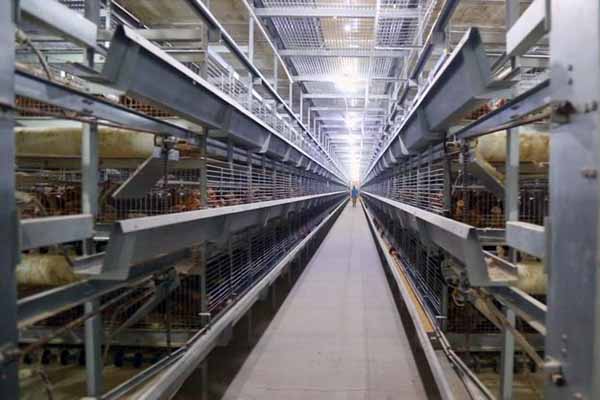Automated Disease Prevention Equipment in Uganda Chicken Farms: Enhancing Poultry Health and Productivity
Time : 2025-06-27
The poultry industry plays a crucial role in Uganda’s agricultural sector, providing an essential source of protein for both domestic and international markets. With the rapid growth of the poultry industry, ensuring the health and productivity of chicken farms has become a top priority. Automated disease prevention equipment has emerged as a game-changer, offering efficient solutions to protect chickens from common diseases and maximize profitability. This article explores the benefits and applications of automated disease prevention equipment in Uganda’s chicken farms.
Introduction
In recent years, the poultry industry has faced numerous challenges, including disease outbreaks, high mortality rates, and decreased productivity. These challenges have been further exacerbated by the rapid spread of diseases like Newcastle Disease, Avian Influenza, and Coccidiosis. To address these issues, farmers in Uganda are increasingly adopting automated disease prevention equipment to enhance the overall health and productivity of their chicken farms.
The Role of Automated Disease Prevention Equipment
Automated disease prevention equipment plays a critical role in minimizing the risk of disease outbreaks in chicken farms. By integrating advanced technologies, these devices can monitor, detect, and control potential disease-causing agents. The following are some of the key components of automated disease prevention equipment:
1. Environmental Monitoring Systems
Environmental factors such as temperature, humidity, and CO2 levels can significantly impact chicken health. Automated environmental monitoring systems can help farmers keep their farms within the optimal range for chicken welfare. By ensuring the right conditions, these systems reduce the likelihood of disease outbreaks.
2. Feed Quality and Waste Management
Improving feed quality and waste management can help prevent disease outbreaks. Automated systems can monitor feed consumption, waste generation, and ensure proper handling of waste. This helps maintain a clean and hygienic environment, which is crucial for disease prevention.
3. Biosecurity Measures
Automated biosecurity measures are designed to prevent the introduction of diseases from the outside. These include disinfection systems, automated door locks, and surveillance cameras to monitor the farm’s perimeter. By ensuring a secure environment, these systems help keep chickens healthy and productive.
4. Health Monitoring Devices
Health monitoring devices can track the well-being of chickens by measuring parameters like body temperature, respiratory rate, and activity levels. These devices can alert farmers to potential health issues early on, allowing for timely intervention and minimizing the risk of disease outbreaks.
Benefits of Automated Disease Prevention Equipment
Adopting automated disease prevention equipment in Uganda’s chicken farms offers numerous benefits, including:
1. Improved Chicken Health and Productivity
By minimizing the risk of disease outbreaks, automated equipment can significantly improve the overall health and productivity of chickens. This, in turn, leads to increased profits for farmers.
2. Cost Reduction
Automated systems can help farmers reduce the costs associated with disease outbreaks, such as treatment, vaccination, and loss of productivity. By preventing diseases from occurring, farmers can save on these expenses.
3. Enhanced Farm Management
Automated equipment allows farmers to monitor their chicken farms remotely, making it easier to manage their operations. This leads to more efficient resource allocation and better decision-making.
4. Compliance with Regulatory Standards
Using automated disease prevention equipment can help farmers comply with national and international regulatory standards. This is particularly important for those planning to export their poultry products.
Case Studies: Successful Implementations of Automated Disease Prevention Equipment in Uganda
Several Uganda chicken farms have successfully implemented automated disease prevention equipment, resulting in significant improvements in chicken health and productivity. Here are some notable examples:
1. ABC Chicken Farm
ABC Chicken Farm, a leading poultry producer in Uganda, invested in an automated environmental monitoring system to control temperature and humidity levels. Since implementing the system, the farm has seen a decrease in disease outbreaks and an increase in egg production.
2. DEF Poultry Ltd
DEF Poultry Ltd adopted a biosecurity solution that included automated disinfection systems and surveillance cameras. As a result, the company experienced a decrease in disease transmission and an increase in sales.
3. GHI Chicken Ranch
GHI Chicken Ranch invested in health monitoring devices to keep track of their chickens’ well-being. The system has enabled the farm to identify and treat sick chickens early, leading to improved overall health and productivity.
Conclusion
Automated disease prevention equipment is a valuable tool for Uganda’s chicken farmers, offering a comprehensive approach to protecting chickens from diseases. By integrating advanced technologies, these systems can help farmers improve their operations, reduce costs, and ensure compliance with regulatory standards. As the poultry industry continues to grow in Uganda, the adoption of automated disease prevention equipment is set to become increasingly important for the success of the industry.
Tags
{Automated Disease Prevention Equipment, Uganda Chicken Farms, Poultry Health, Productivity, Environmental Monitoring, Biosecurity, Health Monitoring, Farm Management}











